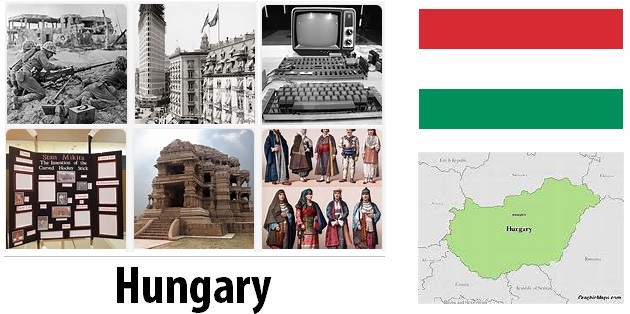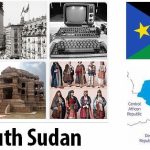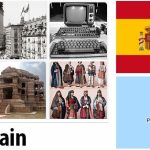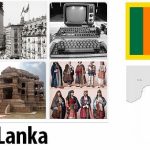Hungary is an independent nation in Eastern Europe. With the capital city of Budapest, Hungary 2020 population is estimated at 9,660,362 according to countryaah. Hungary’s history goes back to the Magyar people, who immigrated in the 8th century. After centuries as a powerful kingdom, Hungary was ruled by the Turks and then by the Austrian empire. Through the First World War Hungary lost large areas, in the Second World War the country first received a Nazi regime and then occupied by Soviet troops. After the war, the Communists took power under Moscow’s control.
- AbbreviationFinder.org: Comprehensive guide to and popular abbreviations of Hungary, covering history, economy, and social conditions.
The area around the Danube’s middle course was inhabited several thousand years before the beginning of our time count. During the first decade before Christ, it became a Roman province. Three hundred years later Germanic peoples and Asian nomads fought to settle in the fertile Danube basin. The name Hungary comes from one of the Magyaric nomadic people, Onogur, who settled there in the 8th century. The Magyars originally came from the Ural Mountains. For Hungary political system, please check computerminus.
In the 9th century, Christianity began to spread in the area, and under King Stefan (István) the Kingdom of Hungary was founded in 1001. From living as nomadic and equestrian people, the Magyars now began to use the land. In parallel, attempts to conquer new territories continued and, until the 1100s, the kingdom was expanded with territories that today belong to Slovakia, Romania and Croatia, among others. In 1241 the country was devastated by invading Mongols, but when a few years later they withdrew, the country was able to recover.
Ottoman occupation
A prosperous period followed until the 16th century when Hungary suffered a bitter defeat against the Ottoman Empire (Turkish state formation) in the Battle of Mohács in 1526. The loss led to the country being divided: central and southern Hungary came under Ottoman occupation, the western and northern fell the rule of the Austrian Habsburgs while Transylvania in the east became its own principality. Since the Austrians defeated the Ottomans at the end of the 17th century, all of Hungary ended up under the Habsburg Empire.
After a series of revolts against the Austrians, a national movement emerged at the beginning of the 19th century. The greatest uprising, the revolution of 1848-1849 led by the hero of freedom Lajos Kossuth, was able to defeat the emperor’s troops with Russian help. But in 1867, Austria, weakened by the defeat of the war against France and Prussia and by several Hungarian insurgency attempts, forced Hungary to become an equal part of the dual monarchy of Austria-Hungary. The Emperor of Austria, Frans Josef, was king over the whole empire and foreign, defense and fiscal politics were common, but Hungary got its own government and legislative assembly.
Losses in the World War
During World War I, Austria-Hungary stood on Germany’s side and belonged to the losers. With the defeat, the double monarchy was dissolved. In the Trianon Treaty in 1920, Hungary lost two-thirds of its territory, and more than three million Hungarians ended up outside the country. Transylvania was incorporated with Romania and the Highlands to the north with Czechoslovakia, while the present Croatia and the Vojvodina area of Serbia went to Yugoslavia.
For a few months, March-August, 1919, Hungary was a communist republic under Béla Kun. In 1920, however, Army Chief Miklós Horthy reestablished the monarchy with himself as “Head of State”. Under his authoritarian rule, the country was ravaged by economic crises. In the 1930s, Hungary approached fascist Italy and Nazi Germany in the hope of regaining lost land.
During World War II, Hungary fought against the Soviet Union from 1941 and participated in the Germans’ attack on Yugoslavia. When the adversity came, the Hungarians tried to withdraw from the war, and then Germany occupied Hungary in March 1944. Horthy was imprisoned after secretly negotiating with the Allies on a ceasefire. He was succeeded by the Hungarian Nazi leader Ferenc Szálasi. In the fall of 1944, Soviet troops invaded Hungary, and in April of the following year the last German soldiers were expelled.
Many of the bitter memories of World War II are linked to the Szálasis Arrow Cross movement. The Arrow Crosses, which drove nationalist and anti-Semitic politics, cooperated with the Nazis. In Budapest, on a quay on the Danube, there is a poignant memorial of Jews murdered by arrow crossers: lots of shoes that are reminiscent of people shot and thrown into the river. Swedish diplomat Raoul Wallenberg was one of those who during the last years of the war tried to save Hungarian Jews from the Holocaust (see Population and language.)
2011
December
Court criticism against media law
The Constitutional Court says that parts of the disputed new media law (see December 2010) entail major interference with freedom of the press. The Court rejects the requirement for so-called balanced surveillance as well as the law’s ability to force journalists to disclose their sources. At the same time, two journalists are dismissed from state TV after they hunger strike in protest of the media law.
Protests against central bankers
The opposition boycotts the vote when Parliament decides on increased political influence over Hungary’s central bank. The EU and the IMF are suspending talks on new support loans in protest of the law. The opposition is also critical of a number of other laws passed by the Fidesz government during the year and which increase the government’s power over, among other things, the judiciary. Criticism also comes from the EU and the US.
Parliament is reduced
Decides to reduce the number of Members of the House from 386 to 199 from the next election and to redo the electoral districts; Hungarian citizens living abroad are entitled to vote.
Religious communities are not recognized
On the day before New Year’s Eve, Parliament decides that over 300 religious communities will no longer be recognized by the state.
November
An ever weaker Hungarian currency
In the shadow of the euro crisis, the Hungarian currency forint is falling sharply, which means that Hungary’s national debt grows to over 80 percent of GDP. The country’s credit rating is deteriorating and the government decides to re-negotiate with the EU and the IMF on support loans. In July 2010, Hungary left the loan negotiations with the IMF after disagreement over the terms.
October
The Socialist Party is shattered
Former Prime Minister Ferenc Gyurcsány and nine party mates leave the Socialist Party and form a new party group in the parliament called the Democratic Coalition (Demokratikus Koalíció, DK).
September
Fines for poison disaster
Aluminum manufacturer MAL is set to fine EUR 473 million for poisonous emissions in western Hungary (see October 2010).
July
97-year-old is released from war crimes
97-year-old suspected war criminal Sándor Kápiró is acquitted by a Budapest court. He is charged with murder of over 30 Jews and Serbs in 1942 but denies the charges. Many of the audience cheer and applaud the verdict. Between 1,200 and 4,000 Jews, Serbs and Roma were murdered for three days by Hungarian forces in a notorious massacre in the city of Novi Sad in January 1942.
April
Fundamental changes are being pushed through
The Socialists and the Green Party boycott the vote in Parliament, when the ruling party Fidesz votes through disputed constitutional amendments. According to the new constitution, the country is held together by God and Christianity, the state must protect life from conception, the national debt is not allowed to exceed 50 percent of GDP and the country changes its name from the Republic of Hungary to only Hungary. The President is entitled to dissolve Parliament annually if no budget is adopted before 31 March. The opposition criticizes that the country’s politically composed fiscal councils can veto the budget.
The Meborg Garden is a concern for Romans
The right-wing extreme citizenry is causing concern among the Roma in eastern and northern Hungary. Hundreds of Roma women and children leave the village of Gyöngyöspata, when a citizen’s guard stations nearby to conduct “training” during the Easter weekend. Some members of the guard are arrested by police.









